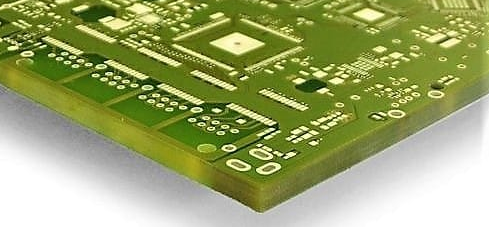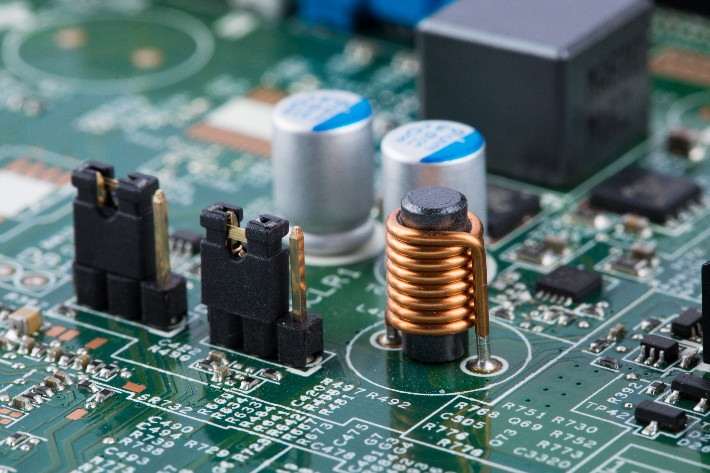Advancements in PCB Manufacturing Techniques and Technologies
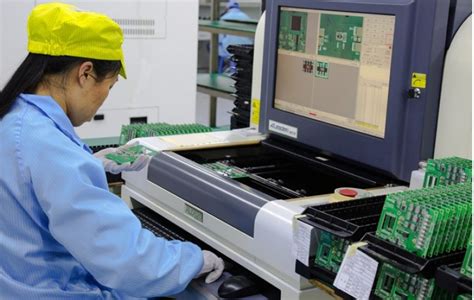
Key Takeaways
The advancements in PCB manufacturing have significantly transformed the landscape of the electronics industry, particularly in the realm of PCB assembly. The integration of emerging technologies such as 3D printing and laser processing has revolutionized traditional methods, enhancing both efficiency and precision. For instance, the implementation of advanced automation in PCBA processes mitigates human error and accelerates production times.
Furthermore, sustainability has become a crucial focus, with many manufacturers adopting eco-friendly materials and processes that reduce waste and energy consumption. A well-rounded approach not only improves profitability but also aligns with global efforts toward environmentally responsible manufacturing practices.
Here’s a concise summary of some major innovations in this field:
| Innovation | Description | Impact on PCB Manufacturing |
|---|---|---|
| Advanced Automation | Utilizes robotics and AI for improved precision | Reduces labor costs and increases output |
| Eco-friendly Materials | Innovations focusing on sustainable resources | Minimizes environmental impact |
| 3D Printing | Allows for rapid prototyping and custom designs | Speeds up development cycles |
"Embracing innovation in PCB manufacturing not only leads to cost savings but also paves the way for sustainable growth."
These advancements indicate a promising future for the industry, suggesting that ongoing investment in technology will further refine the efficiency and effectiveness of PCB production methodologies. As these trends continue to evolve, staying informed about the latest techniques will be essential for manufacturers aiming to maintain a competitive edge.
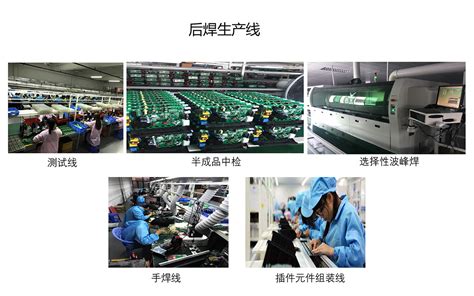
Introduction to PCB Manufacturing: Trends and Innovations
The field of PCB manufacturing is rapidly evolving, driven by the need for greater efficiency and precision alongside emerging technological capabilities. Innovations such as automated assembly processes are paving the way for enhanced productivity in pcb assembly, allowing manufacturers to achieve faster turnaround times while maintaining high-quality standards. The integration of advanced materials has improved not only the overall performance of printed circuit boards (PCBs) but also their adaptability to various applications, from consumer electronics to industrial systems. Moreover, techniques that prioritize sustainability are becoming an essential part of the PCB fabrication framework. By employing materials and processes that reduce waste and energy consumption, manufacturers can minimize their environmental impact while still meeting the demands of a competitive market. As companies increasingly adopt these innovative approaches, the future of PCB manufacturing looks promising, with continued advancements poised to redefine the landscape of pcba operations globally.
Emerging Technologies in PCB Fabrication
The landscape of PCB manufacturing is evolving rapidly, characterized by the integration of cutting-edge technologies that are reshaping the PCB assembly process. One of the most notable advancements is the adoption of additive manufacturing, which facilitates the production of complex geometries that were previously challenging or impossible with traditional methods. This technique not only enhances design flexibility but also reduces material waste, aligning with the industry’s push towards sustainability. Additionally, innovations like laser etching and digital printing are revolutionizing how designs are transferred onto substrates, allowing for greater precision and faster turnaround times in PCBA. Moreover, the incorporation of automated inspection systems ensures higher quality control during production, reducing errors and improving overall yield. As these technologies continue to develop, manufacturers find themselves in a position to create more efficient, accurate, and environmentally friendly PCB solutions that meet the growing demands of modern electronics. The confluence of these emerging technologies promises to enhance not only production efficiency but also the longevity and functionality of electronic devices based on these advanced printed circuit boards.
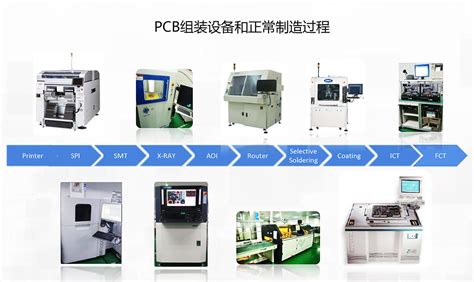
Enhancing Efficiency in PCB Production Processes
In the competitive landscape of PCB manufacturing, enhancing efficiency during production processes is paramount. Advanced methodologies, such as the integration of modular pcb assembly techniques, enable manufacturers to optimize workflow and reduce lead times. Innovations like automated soldering and inspection systems contribute significantly to the precision of pcba processes, minimizing human error and ensuring high-quality outcomes. The implementation of smart manufacturing practices, including real-time monitoring and analytics, allows for better resource management and increases overall productivity. Furthermore, advancements in materials science have led to the development of new substrates that not only improve electrical performance but also enhance manufacturing speed. By embracing these cutting-edge technologies, producers can achieve a more agile response to market demands while maintaining rigorous standards of quality assurance in their PCB production processes. This focus on efficiency not only contributes to cost reduction but also fosters a sustainable approach, supporting long-term viability in an ever-evolving industry.

Precision Techniques in PCB Manufacturing
In the realm of PCB manufacturing, precision is paramount, as even minor deviations can lead to product failures. Contemporary advancements in precision techniques significantly contribute to the overall quality and reliability of printed circuit boards (PCBs). One notable innovation is the use of laser technology for etching circuit patterns, which offers higher accuracy compared to traditional methods. This technique not only enhances the intricacy of designs but also minimizes material waste, aligning with modern sustainability goals. Furthermore, the integration of automated inspection systems utilizing machine vision helps ensure that every pcb assembly meets stringent quality standards. Such machines are capable of detecting defects that may be invisible to the human eye, thus increasing confidence in pcba reliability. In addition, advanced software tools enable precise simulation and modeling during the design phase, ensuring that potential issues are addressed before production starts. With these developments, manufacturers are better equipped to deliver high-quality assemblies that meet both functional and aesthetic requirements, ensuring a robust performance in various applications. The emphasis on precision not only enhances product quality but also fosters innovation within the industry, as companies can explore new design possibilities with increased confidence in their manufacturing processes.
Sustainable Practices in PCB Fabrication
In the realm of PCB manufacturing, sustainable practices are gaining traction as manufacturers strive to reduce their environmental impact while maintaining high production standards. One effective approach is the use of eco-friendly materials in the pcb assembly process. This not only minimizes waste but also enhances the recyclability of the printed circuit boards (PCBs). Additionally, adopting advanced techniques such as water-based solder masks and lead-free soldering contributes to a cleaner production environment. Innovations in manufacturing processes are also crucial; for instance, closed-loop water systems reduce water consumption and ensure that contaminants are effectively managed. The integration of renewable energy sources into PCB fabrication facilities is another noteworthy advancement, as it decreases reliance on fossil fuels and lowers carbon footprints. By implementing these sustainable methods, manufacturers can significantly improve their overall efficiency while also aligning themselves with global environmental standards, ensuring that their pcba production meets both industry demands and ecological responsibilities.

The Role of Automation in PCB Manufacturing
The integration of automation in PCB manufacturing significantly transforms the landscape of pcb assembly processes, enhancing both productivity and quality. By incorporating advanced robotics and automated systems, manufacturers can streamline various stages of production, from initial layout design to the final assembly of components on the PCB. The use of automated pick-and-place machines facilitates precise placement of components, ensuring an accurate fit that minimizes the risk of defects. Additionally, automation enhances the efficiency of manufacturing by reducing human error and lowering production times for pcba. With continuous monitoring through automated quality control systems, manufacturers can achieve a greater degree of precision and consistency in fabricating printed circuit boards. Moreover, automation supports sustainable practices by optimizing resource usage and reducing waste during production cycles. As companies embrace these innovations, the future promises even more sophisticated automated techniques that will further advance efficiency in PCB fabrication while meeting the ever-growing demands for high-performance and reliable electronic devices.
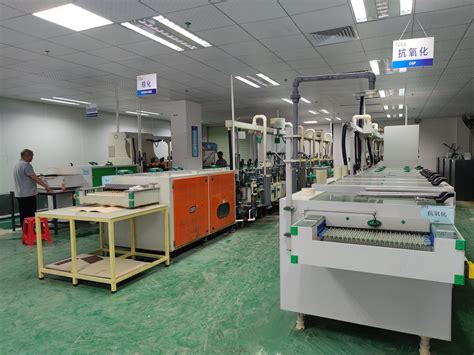
Future Trends in PCB Production Technologies
The landscape of PCB manufacturing is rapidly evolving, driven by the need for enhanced efficiency, reduced waste, and increased accuracy. One prominent trend is the integration of smart technology into the PCB assembly process. Companies are investing in intelligent automation systems that not only streamline production but also monitor real-time data for improved decision-making. Additionally, advances in materials science are paving the way for printed circuit boards with greater electrical performance and durability. These innovations often focus on developing eco-friendly substrates that align with sustainability goals, thereby minimizing the environmental impact associated with pcba processes. Furthermore, the adoption of additive manufacturing techniques is setting new benchmarks in customization and rapid prototyping, allowing manufacturers to create complex designs that were once deemed impractical. As the demand for smaller and more powerful electronic devices continues to grow, these emerging technologies will play a critical role in transforming how PCBs are produced, making them more adaptable to future electronic applications while ensuring operational efficiency.
Case Studies: Successful Implementations of Advanced PCB Techniques
The landscape of PCB manufacturing has witnessed significant transformations, fueled by the adoption of advanced techniques and technologies. One notable example is the integration of automation in the production of printed circuit boards (PCBs), which enhances efficiency and accuracy across various stages. A leading electronics company implemented a state-of-the-art pick and place system, resulting in a notable increase in the speed of PCB assembly (PCBA) processes while minimizing defects. This system employs optical inspection to ensure the precise placement of components, thus reducing rework and waste.
Moreover, another case study featured a partnership between a small-scale manufacturer and a tech startup focused on sustainable practices. By leveraging innovative materials that are both lightweight and environmentally friendly, they successfully reduced the carbon footprint of their PCB fabrication process. This collaboration not only improved their market competitiveness but also attracted environmentally conscious customers looking for eco-friendly solutions.
These case studies exemplify how embracing advanced techniques in PCB manufacturing can lead to substantial gains in efficiency, precision, and sustainability. As industries continue to evolve, such successful implementations serve as valuable benchmarks for others aiming to optimize their own pcba processes while adapting to modern demands.
Conclusion
As the landscape of PCB manufacturing evolves, the advancements discussed throughout this article highlight a promising trajectory for the PCB assembly industry. By integrating emerging technologies and focusing on sustainability, manufacturers are not only improving their production efficiency but also addressing environmental concerns. The implementation of automation and innovative fabrication techniques has resulted in higher precision in the creation of printed circuit boards, which is essential for meeting the demands of modern electronics. Furthermore, case studies demonstrate that many companies have successfully adopted these advanced PCBA methods, resulting in a competitive edge within the marketplace. Moving forward, it is crucial for businesses to remain adaptable and embrace these technological advancements to ensure continued growth and relevance in the rapidly changing industry. The future of PCB production technologies looks bright, paving the way for even higher standards in quality and performance that will ultimately benefit manufacturers and consumers alike.
FAQs
What is PCB assembly?
PCB assembly, also known as PCBA, refers to the process of placing electronic components onto a printed circuit board (PCB) and connecting them electrically. This crucial step transforms a bare PCB into a functional electronic device.
What are the common techniques used in PCB manufacturing?
Several techniques are commonly employed in PCB manufacturing, including surface mount technology (SMT), through-hole technology, and advanced methods such as laser etching and 3D printing. These innovations enhance both efficiency and precision in the assembly process.
How does automation impact PCB production?
Automation plays a vital role in modern PCB manufacturing, significantly improving production speed and consistency. Automated systems reduce human error and contribute to a streamlined workflow, facilitating larger volumes of PCBA at higher quality standards.
What are the benefits of sustainable practices in PCB fabrication?
Sustainable practices in PCB fabrication aim to reduce waste, lower energy consumption, and utilize eco-friendly materials. By prioritizing these practices, manufacturers can not only meet regulatory standards but also appeal to environmentally conscious customers.
Why is precision important in PCB manufacturing?
Precision is critical in pcb assembly, as even minor deviations can result in circuit malfunctions or failures. Advanced techniques like automated optical inspection (AOI) ensure high levels of accuracy during the production process, ultimately enhancing product reliability.



